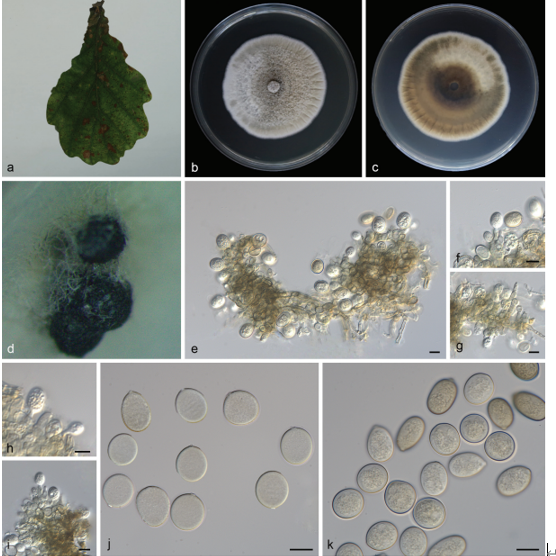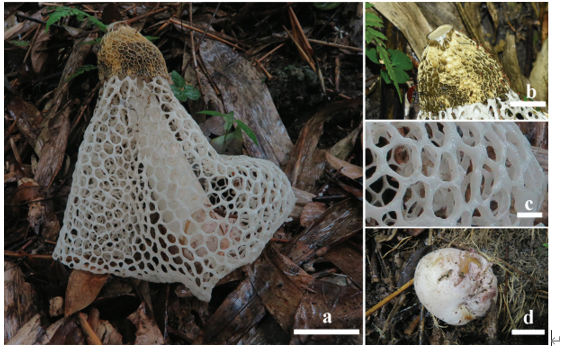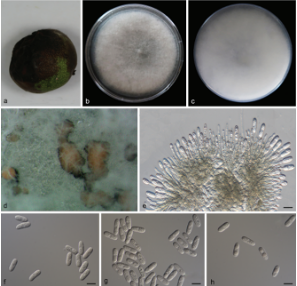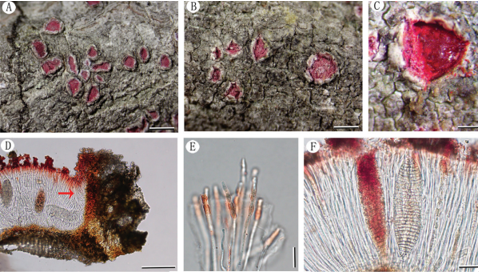Scheffersomyces jinghongensis C.Y. Chai & F.L. Hui, sp. nov. 2020
MycoBank No: 835004
Holotype: China, Yunnan Province, Jinghong, in rotting wood, under a tropical rainforest, July 2017, K.F. Liu & Z.W. Xi (ex-holotype: CICC 33270; CBS 15230).
Morphological description
The cells are ovoid to elongate (3–4 ×3–7.5 μm) and occur singly or in pairs after being placed in YM broth for 3 days at 25 °C (Fig. 2A). Budding is multilateral. After 3 days of growth on YM agar at 25 °C, the colonies are white to creamcolored, buttery, and smooth, with entire margins. After 7 days at 25 °C on a Dalmau plate culture with CM agar, pseudohyphae were observed but true hyphae were not (Fig. 2B). Asci or signs of conjugation were not observed on sporulation media. Glucose, galactose, trehalose, cellobiose, and d-xylose (weak) are fermented, but maltose, sucrose, melibiose, lactose, melezitose, raffinose, and inulin are not. Glucose, galactose, l-sorbose, d-glucosamine, d-ribose, d-xylose, sucrose, maltose, trehalose, cellobiose, arbutin, melezitose, inulin, glycerol, erythritol, ribitol, xylitol, d-glucitol, d-mannitol, d-glucono-1, 5-lactone, 2-keto-d-gluconate, d-glucuronate, succinate, and ethanol are assimilated. No growth was observed in l-arabinose, d-arabinose, l-rhamnose, methyl α-d-glucoside, salicin, melibiose, lactose, raffinose, l-arabinitol, galactitol, myo-inositol, 5-keto-d-gluconate, d-gluconate, dl-lactate, citrate, or methanol. For the assimilation of nitrogen compounds, growth on l-lysine, glucosamine, or d-tryptophan is positive, while growth on nitrate, nitrite, ethylamine, cadaverine, creatine, creatinine, or imidazole is negative. Growth is observed at 37 °C but not at 40 °C. Growth in the presence of 0.1% cycloheximide is positive, but growth in the presence of 10% NaCl with 5% glucose and 1% acetic acid is negative. Starch-like compounds are not produced. Urease activity and diazonium blue B reactions are also negative.
Habitat: in rotting wood, under a tropical rainforest
Distribution: China
GenBank Accession: ITS MG255722,MT133547; nrLSU D1/D2 MG255714, MT133543
Notes: Two strains representing S. jinghongensis were grouped in an independent lineage and are related to S. titanus and other Scheffersomyces species. The nucleotide differences between the new species and the close relative S. titanus (Liu et al. 2016b) are 1.6% substitutions in the D1/D2 domain and 4.9% substitutions in the ITS region, respectively. Physiologically, S. jinghongensis can be differentiated from S. titanus based on growth in l-arabinose, l-rhamnose, methyl α-d-glucoside, salicin, lactose, myo-inositol, and 5-keto-d-gluconate, all of which were positive for S. titanus and negative for the new species. Additionally, S. jinghongensis ferments cellobiose and grows at 37 °C, but not for S. titanus.
Reference: Jia R-R, Lv S-L, Chai C-Y et al. (2020) Three new Scheffersomyces species associated with insects and rotting wood in China.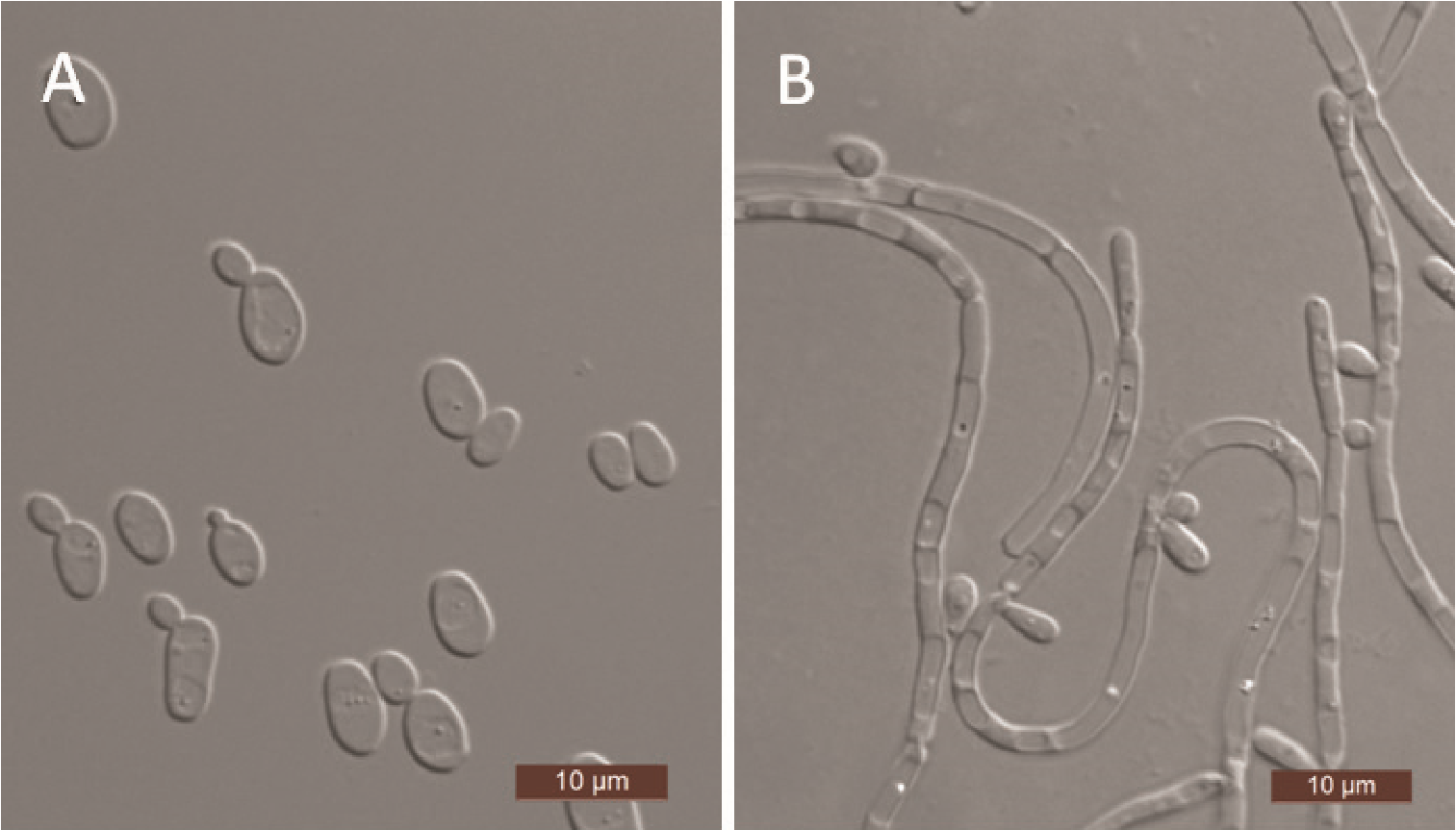
Morphology of S. jinghongensis. A budding cells B pseudohyphae. Scale bars: 10 μm.


